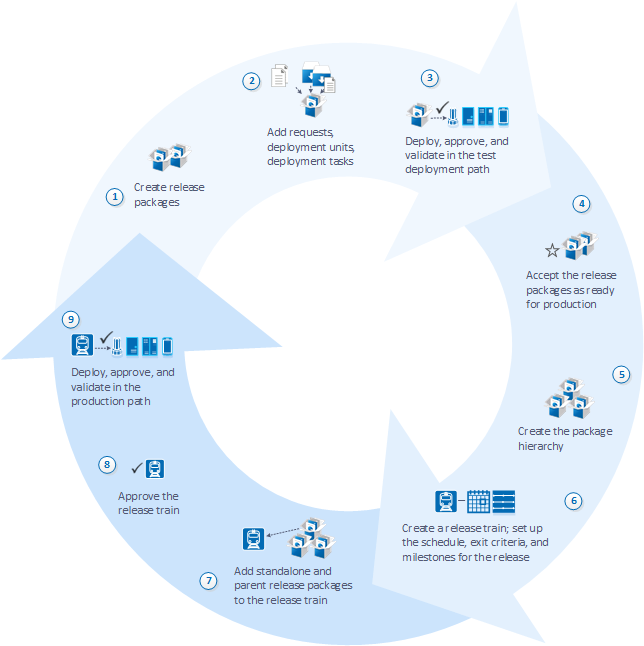This section describes a typical successful flow using deployable release trains.
The steps in this section assume that Release Control has been installed and configured, and that release elements have been created using the steps in Creating Release Elements.
A typical flow using a deployable release train is shown in the following figure.

Note: The flow you use in your implementation may be different.
- Create standalone release packages.
- Add requests, deployment units, and deployment tasks to the release packages.
- Deploy, approve, and validate release packages in the test environments in the deployment path.
- Deliver production-ready release packages to the release engineering team for acceptance.
- Optionally organize the release packages in a logical
parent-child hierarchy for attachment to a release train.
Tip: This is typically done in preparation for deploying the release train, and is therefore done after candidate release packages have been tested through test environments. Once the release packages are ready to be released as part of a particular release train, the release package hierarchy can be added to the release train.
- Create a deployable release train and add exit criteria and milestones.
- Add all standalone and parent release packages targeted for this
release to the release train and add any train-level requests, deployment
units, and deployment tasks.
Tip: The linked release packages will be changed to follow the production deployment path associated with the release train.
- Approve the release train for deployment.
- Deploy and approve the release train through the production deployment path.